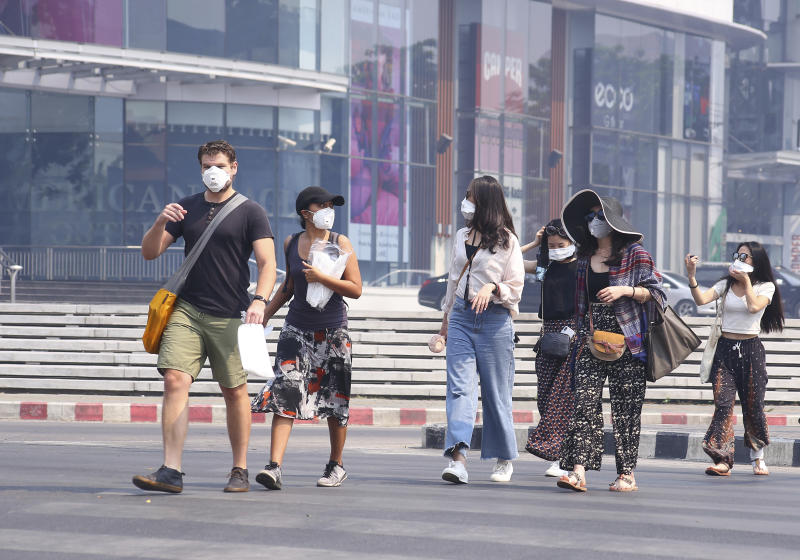
CHIANG MAI: More than 8,600 residents in northern Thailand have sought treatment for haze-related respiratory illnesses since January, according to the National Health Security Office (NHSO).
Since February, air concentrations of PM2.5 pollutants in the northern provinces have soared beyond the safe threshold set by the government and World Health Organisation (WHO).
Recently, PM2.5 levels in Chiang Mai's Mae Taeng district reached an alarming level of 492.57 microgrammes per cubic metre (µg/m³), 10 times the safe limit imposed in Thailand and 20 times the safe limit of the WHO.
In Chiang Rai's Mae Sai district, the PM2.5 level has remained above 100µg/m³ metre since March 13.
Yesterday, the PM2.5 average in nine northern provinces was between 47 and 123µg/m³ in Chiang Rai, Chiang Mai, Lampang, Lamphun, Mae Hong Son, Nan, Phrae, Phayao and Tak. The highest level was reported in tambon Jong Kham of Muang district, Mae Hong Son, according to the Pollution Control Department.
The department sets 50µg/m³ as Thailand's safe level, while WHO's limit is 25µg/m³.
Crop burning during the dry season has been blamed for the poor air quality, but the smog has also been exacerbated by urban and industrial expansions and the rising numbers of vehicles on the roads.
NHSO deputy secretary-general Dr Atthaporn Limpanyalert said the number of people seeking treatment for haze-related respiratory conditions in Chiang Mai and other northern provinces has significantly increased over the last three months.
"The most vulnerable groups are patients with heart, lung and respiratory diseases and allergies. The haze can aggravate these conditions," he said.
Dr Atthaporn suggested residents in areas with high air pollution wear the N95 face masks designed to keep out fine particles while outdoors and stay indoors as much as possible.
"PM2.5 is harmful because it's a very fine dust particle, small enough to pass through to the lungs and enter the bloodstream. Protracted exposure can cause respiratory diseases, including lung cancer, heart disease and stroke," he said.
Dr Atthaporn and a group of NHSO officials on Friday visited communities in Chiang Mai's Doi Saket district to observe the problem, distribute N95 masks to residents and educate them on how to wear the masks properly.
Chitipon Sarnpang, mayor of Choeng municipality, said communities in the Choeng Doi area now need around 5,000 masks for their residents and would welcome donations as the smog situation is causing a shortage of N95 masks in the area.
"We have set up a health volunteer group to conduct checks on residents to guard them against potential health hazards associated with the haze," he said.
"Additional water spraying equipment has also been installed in many spots, but we still need more masks."